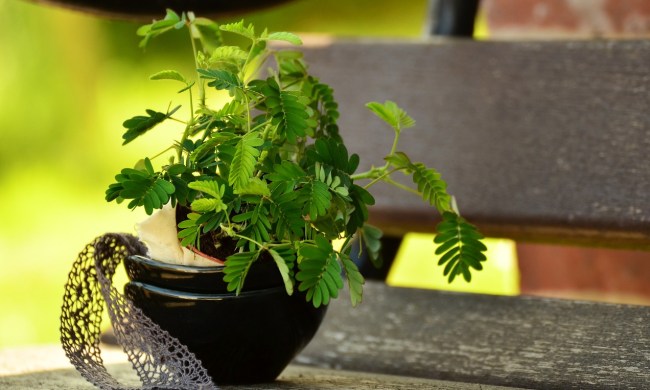Bromeliads are gorgeous houseplant that are known for their vibrant flowers and glossy leaves. When getting a bromeliad for the first time, many people find themselves asking a few questions. How big do bromeliads get? What’s the average bromeliad size? How long do bromeliads live? These flowering houseplants are slow-growing, and most of the time when you buy them from the nursery they’re already blooming. That means they’re fully mature and as big as they’re going to get. However, if you want to try propagating your own bromeliad, then you’ll need to know what to expect.
How large will your bromeliad grow?

Throughout their life, houseplant bromeliads can grow anywhere from 1 inch to 3 feet tall. Some won’t reach the biggest height by maturity, but some will. It’s a toss-up when you’re growing pups for how big they will eventually get, but you should plan for a 2 to 3-foot-tall plant to be on the safe side.
A good indicator of how tall the pups may reach by maturity is the parent plant they stemmed from. If you bought a bromeliad on the taller side, you can assume that these new ones you’ve propagated will grow to a similar height because they’ll share similar genes. Of course, nothing is guaranteed, and the size your bromeliad grows too will also depend on if it receives the proper care throughout the course of its slow-growing life.
How to care for your growing bromeliad

Bromeliads are fairly simple plants to care for. They aren’t high-maintenance and don’t require anything special. One of the main differences between bromeliads and other plants is that you don’t put the water directly in the soil. Instead, you fill the water tank (or cup) of the plant at the base of the leaves. Once every week or so, you’ll want to change out the water that’s in the plant to avoid stagnant/stale water causing rot and collecting insects. If you’d like, you can also feed it with a fertilizer once a month during the growing season.
Similar to the variance in height of different bromeliads, you’ll find that different varieties of the plant may also prefer different lighting. Some prefer more shaded spaces, while others prefer bright, indirect light. The only sunlight you’ll want to fully avoid is direct. Direct light can cause damage to your plant, especially its leaves. If you notice your bromeliad isn’t thriving in one type of lighting, try switching to another for a brief period of time to see how it fares.
How long do bromeliads live?
The bromeliad that you’ll find most at nurseries and plant stores is the flowering guzmania. It’s the most common variety of bromeliad, and it leaves for two to three years with the right care. And since its blooms last for a significant amount of time once it matures, you’ll get to enjoy the plant at its best and brightest for a good portion of its life.
Although the bloom is beautiful, it does signal the plant’s end of its life cycle. The flower itself can survive up for a year if cared for properly, but once the bloom dies, you’ll know that your bromeliad is nearing its end. But the life of a bromeliad is a beautiful thing — post-bloom is when the pups begin to grow. The parent plant puts its remaining energy into the growth of new pups for propagation. Once the pups are roughly half the size of the parent plant, you can separate them, pot them, and continue your bromeliad collection.
Keeping your bromeliad safe from pests

Luckily, when grown in the home, bromeliads will suffer from less pests than their outdoor counterparts. An indoor environment is far from their natural predators, but that doesn’t mean they won’t ever become infested.
Mealybugs, aphids, and scale can cause damage to your bromeliad plant — but they aren’t naturally found inside. Most likely, if you have an infestation of any of these pests in your home, it’s because they were brought in on a plant that was infected. The best way to keep your bromeliad (and all your houseplants) safe from pests is to examine the new plants before you bring them home. And even then, it can be a good idea to keep the new ones separate from your other plants for three weeks, giving any potential eggs time to hatch. After three weeks if there are no pests, you can feel confident putting your new plant with your others.
Will some bromeliads stay small?

If you’re looking at the space you have available and wondering how you’re going to fit a fully grown bromeliad, then you’ll be happy to hear that there are some miniature bromeliads. Sometimes also called compact bromeliads, these varieties do not grow as large as other bromeliads. Their heights can still vary from variety to variety, with some growing only a few inches tall. While these bromeliads are less common in nurseries, you can typically find them sold in terrarium supply stores. Miniature bromeliads are great candidates for desk plants, terrariums, and kokedamas.
The best defense against pests is a good offense. Be vigilant about examining new plants before bringing them into your home. Luckily, a healthy bromeliad can withstand a small infestation. So, if it does become infected, you have some time to solve the issue before it’s too late.



